As contemporary architecture searches for meaning beyond form and function, a quiet movement is unfolding—one that draws from the contemplative world of tea culture to shape spaces of stillness, ritual, and connection. Across varied landscapes and cultural contexts, architects and designers are reimagining the teahouse as a space where tradition meets experimentation, where materials speak, and where time slows down. These intimate structures distill centuries of heritage into modern expressions, offering immersive experiences that blend craft, atmosphere, and a deep respect for place.
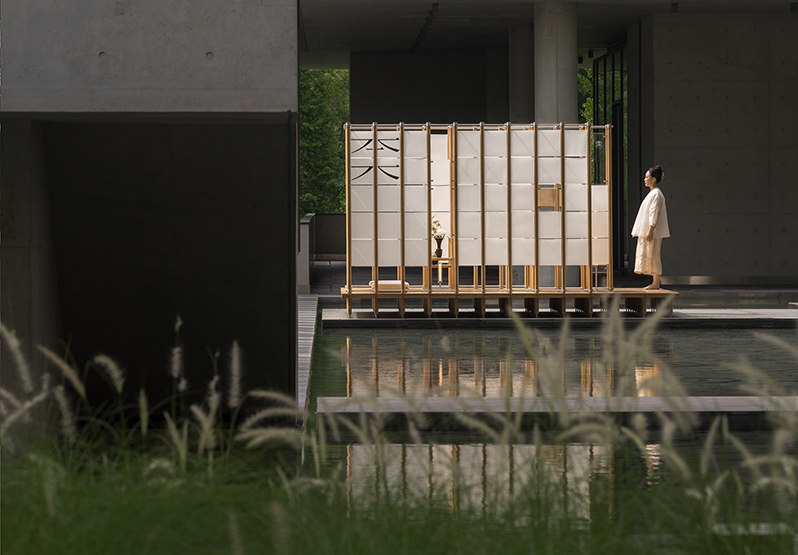
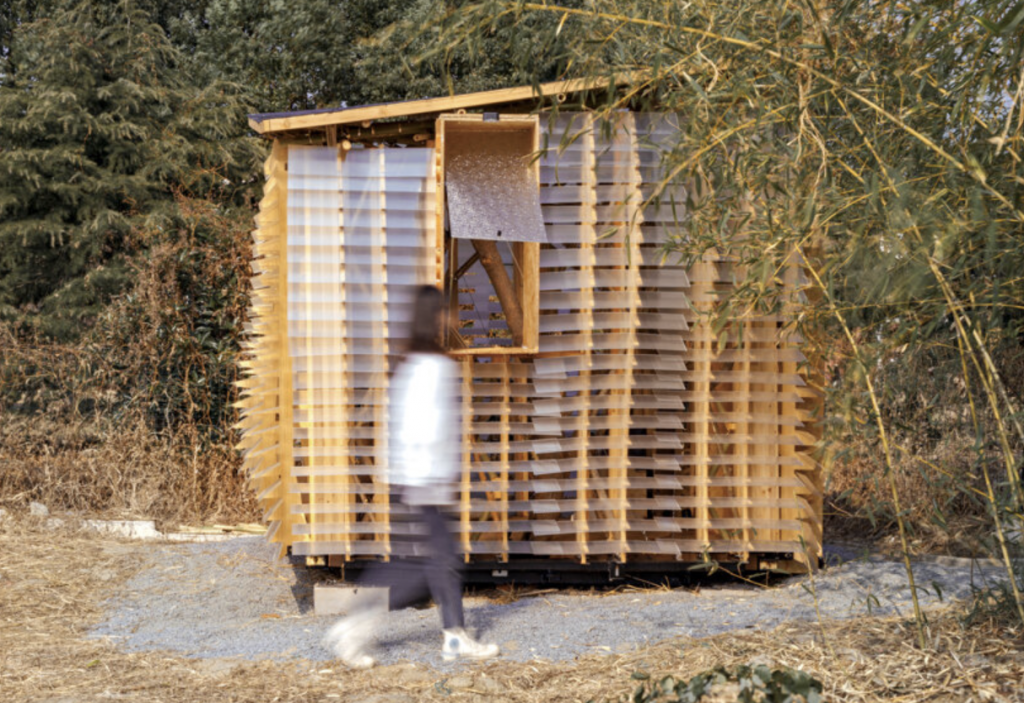
XBAMBOO Cabin
The XBAMBOO Cabin, designed and built by architecture students at Soochow University in Suzhou, China, is an extraordinary teahouse that seamlessly blends nature, tradition, and innovation. Tucked into a lush bamboo forest on the university’s Dushuhu Campus, the 6-square-meter structure serves as a tranquil retreat for tea drinking and meditation. Its intimate scale and immersive setting invite quiet reflection, offering a serene escape from the pace of daily life—a principle at the heart of tea culture.
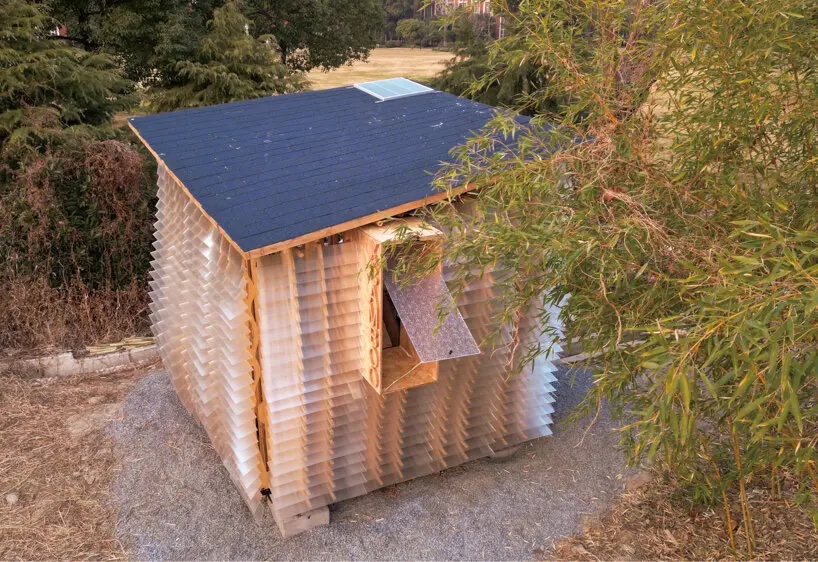
XBAMBOO Cabin
Shaped by both its natural environment and experimental design, the cabin features a translucent acrylic skin that filters soft, ambient light into the space, enhancing the contemplative mood ideal for tea rituals. Inside, a timber frame—optimized through AI-driven design using GAN algorithms—gives structural clarity while adding sculptural elegance. Carefully placed openings create a dialogue with the landscape: a welcoming front door connects to a nearby path, and a large bay window on the south side frames the surrounding bamboo grove like a living painting.
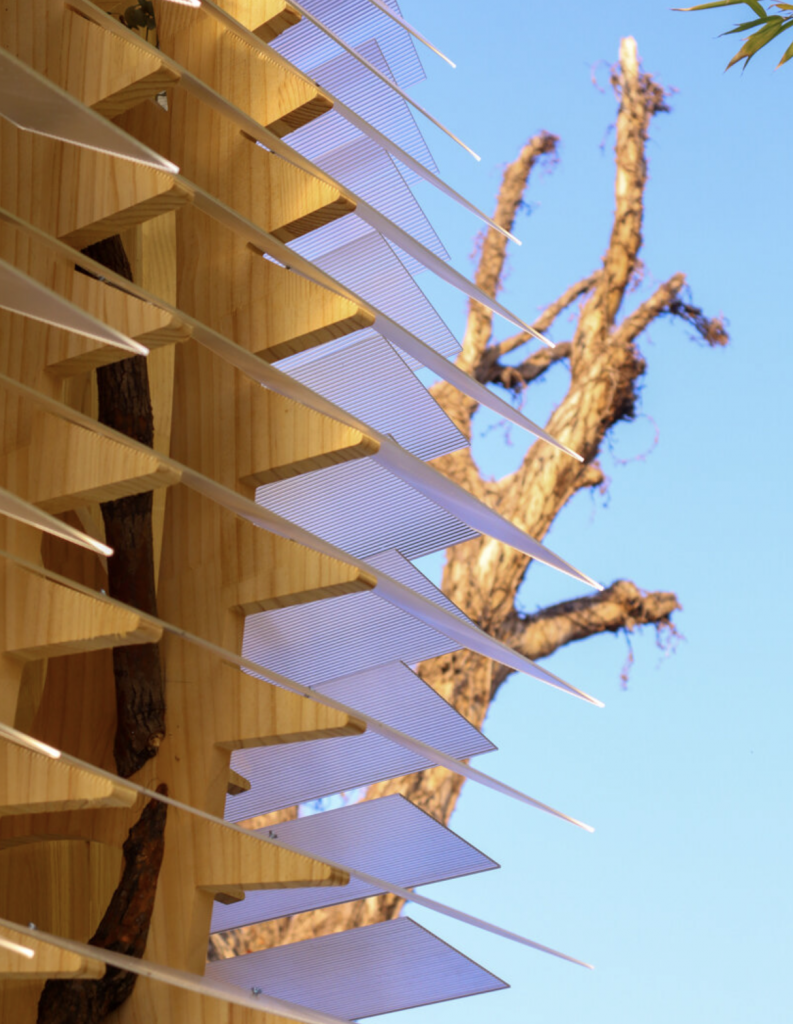
XBAMBOO Cabin
While rooted in the values of traditional timber craftsmanship, the XBAMBOO Cabin reimagines the teahouse through advanced construction techniques. Students used robotic fabrication and parametric modeling to transform locally sourced, irregular materials—tree trunks, branches, and bamboo—into a finely tuned structure. Bamboo arches harvested from the campus garden and structural bracings crafted from natural timber elements reflect a sensitive fusion of digital precision and organic form.
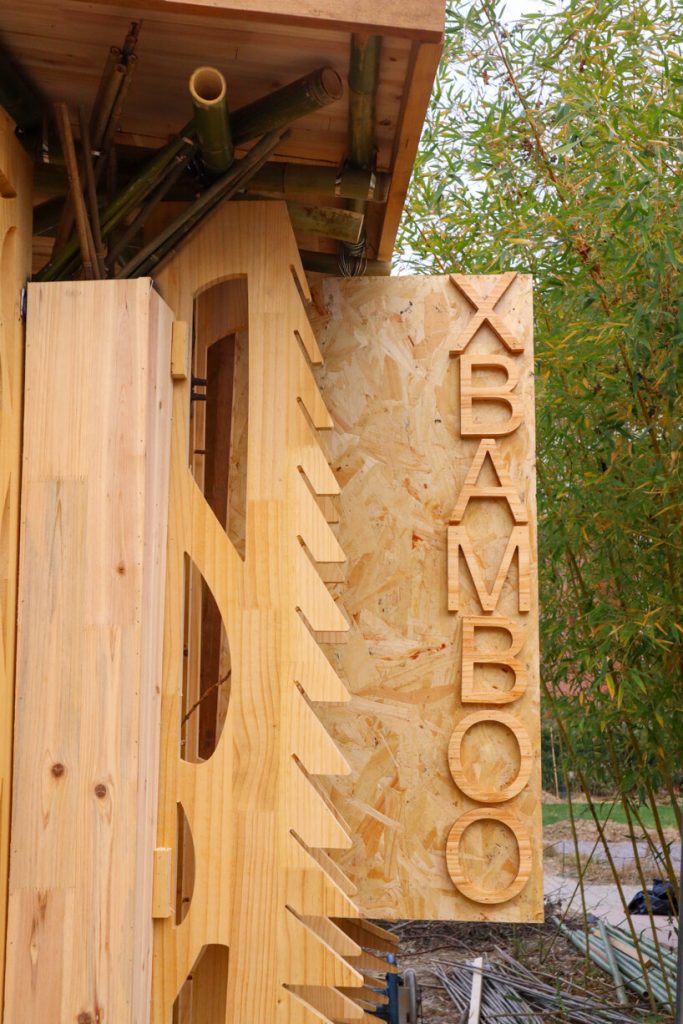
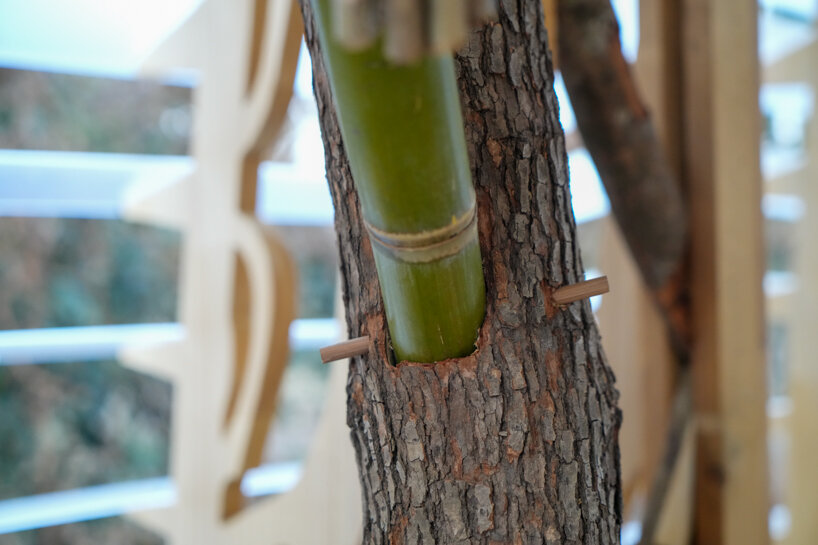
XBAMBOO Cabin
To accommodate the unique shapes of raw materials, each component was 3D-scanned, digitally modeled, and robotically refined for precise joining. Two innovative jointing systems—’plug-in’ joints for inserting Moso bamboo into prefabricated slots, and ‘add-on’ joints resting on 3D-printed footings—enable both strength and adaptability. Resting lightly on a steel frame with four concrete foundations, the XBAMBOO Cabin minimizes its environmental footprint while exemplifying how the timeless art of tea can inspire forward-thinking, sustainable architecture.
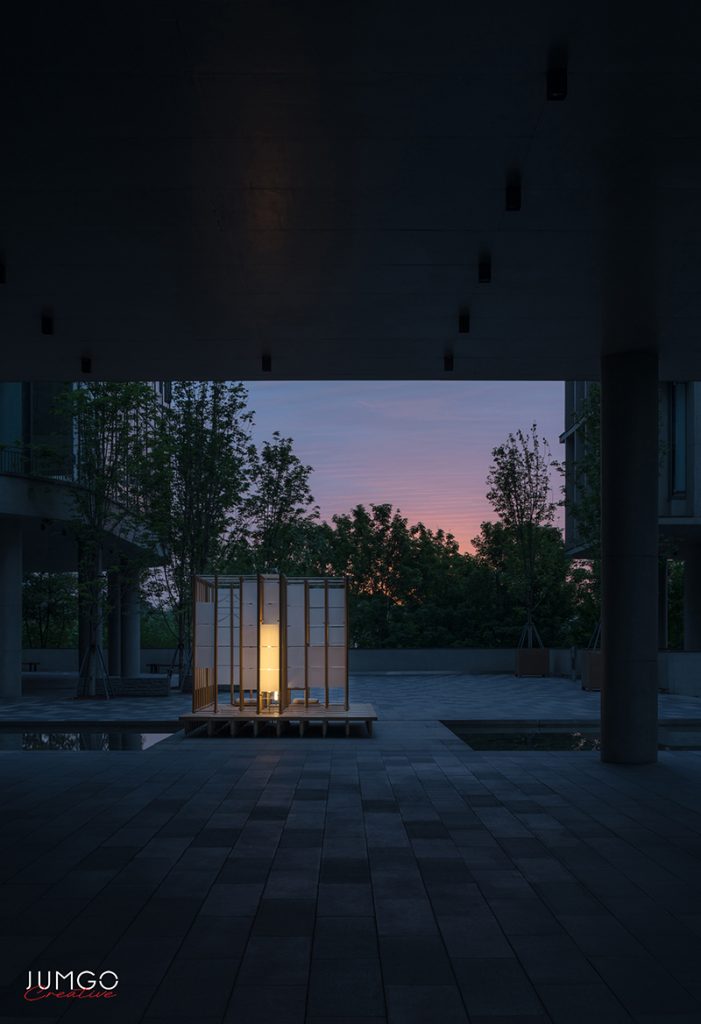
Chi tea room by Jumgo Creative (also header image)
Following the XBAMBOO Cabin’s serene interplay of nature and innovation, the Chi (Foot) tea room installation in Chengdu offers a more compact but equally thoughtful approach to reimagining the contemporary teahouse. Created by Jumgo Creative in collaboration with traditional woodworking brand BEN MOO, this project transforms an overlooked outdoor space beside an exhibition hall into a highly adaptable tea environment. At the heart of the design is a square unit based on the ancient Chinese measurement chi (33.3 centimeters), a nod to the human-centered logic of historical building systems.
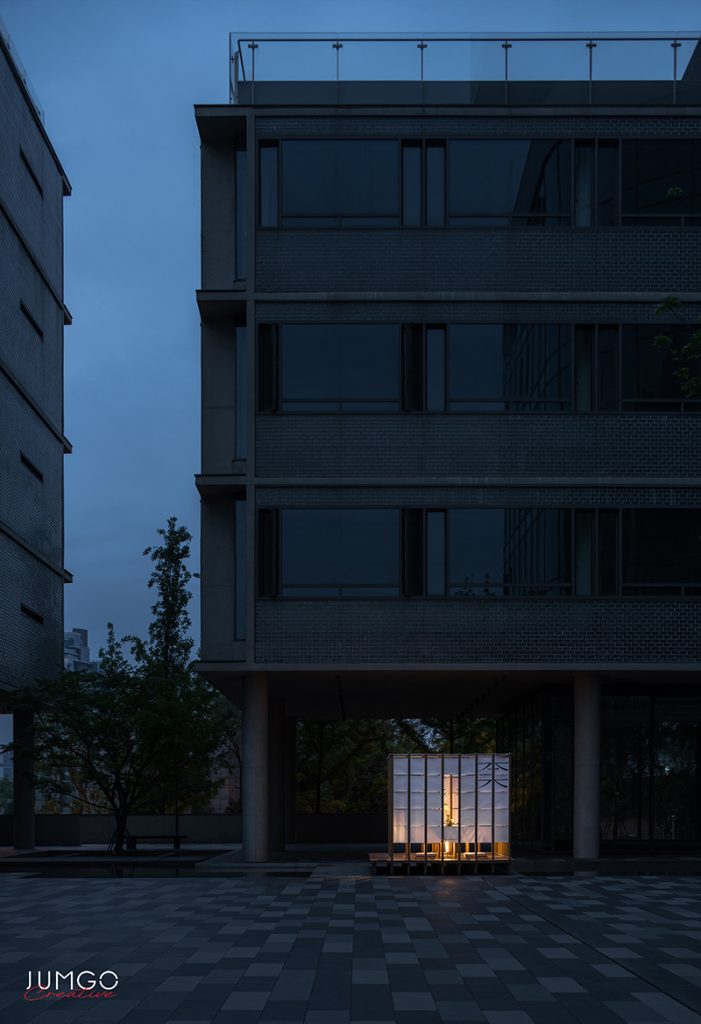
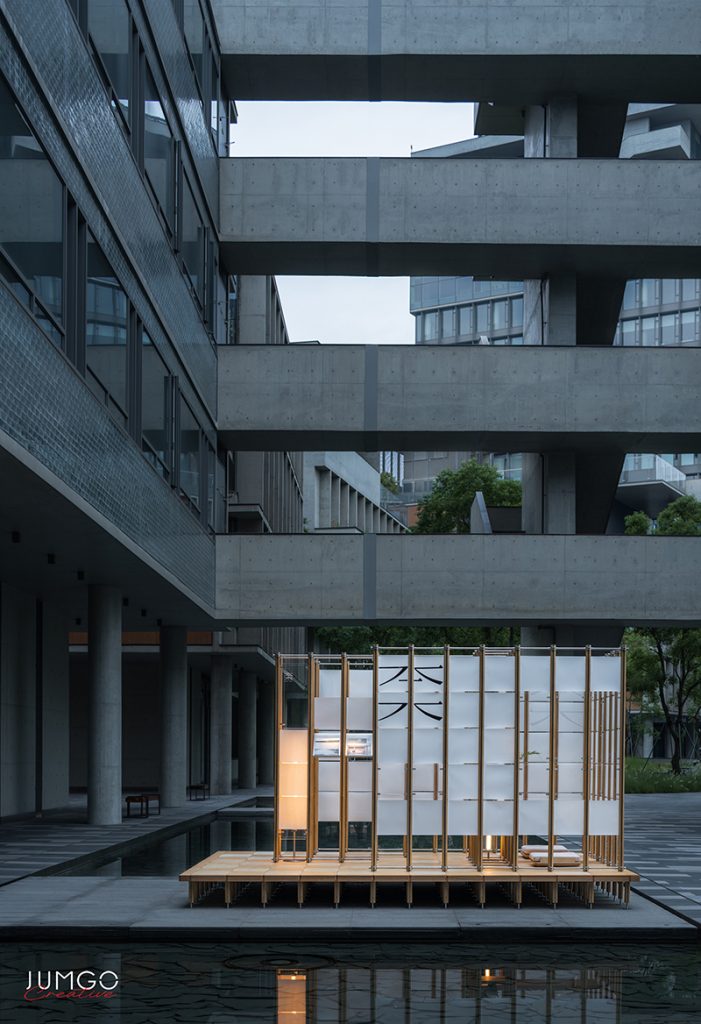
Chi tea room by Jumgo Creative
This conceptual foundation informs every element of the installation—from the modular furniture to the proportions of the space itself. Cabinets, tables, screens, and seating can be rearranged or expanded depending on the function, reflecting not only the unit-based logic but also the flexible rituals of tea culture today. The space is minimalist in size but maximal in intention, emphasizing how traditional ideas of measurement and proportion can guide modern design toward elegance and clarity.
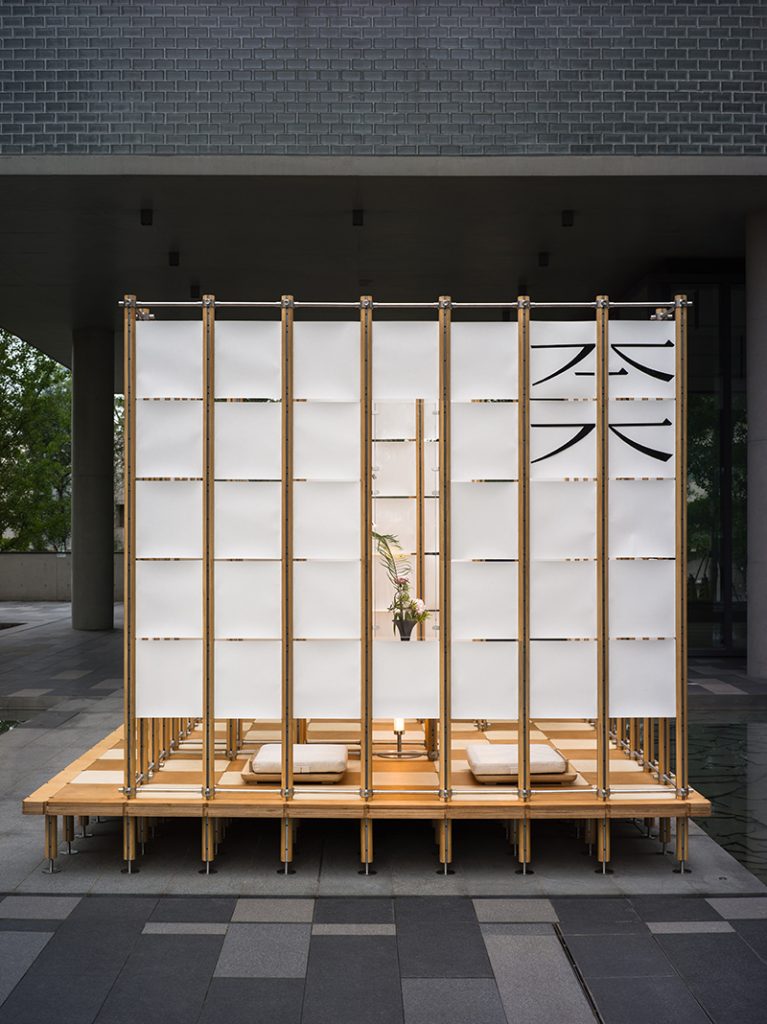
Chi tea room by Jumgo Creative
Aesthetically, the tea room balances contrasts: warm wood surfaces are set against the strength of metal frames, and soft lighting—custom-developed for the installation—imbues the small space with depth and intimacy. By merging tactile materials with precision detailing, the Chi project invites users to slow down and engage with both the physical space and the tea-drinking process. It exemplifies a quiet but powerful dialogue between tradition and modernity, scale and emotion.
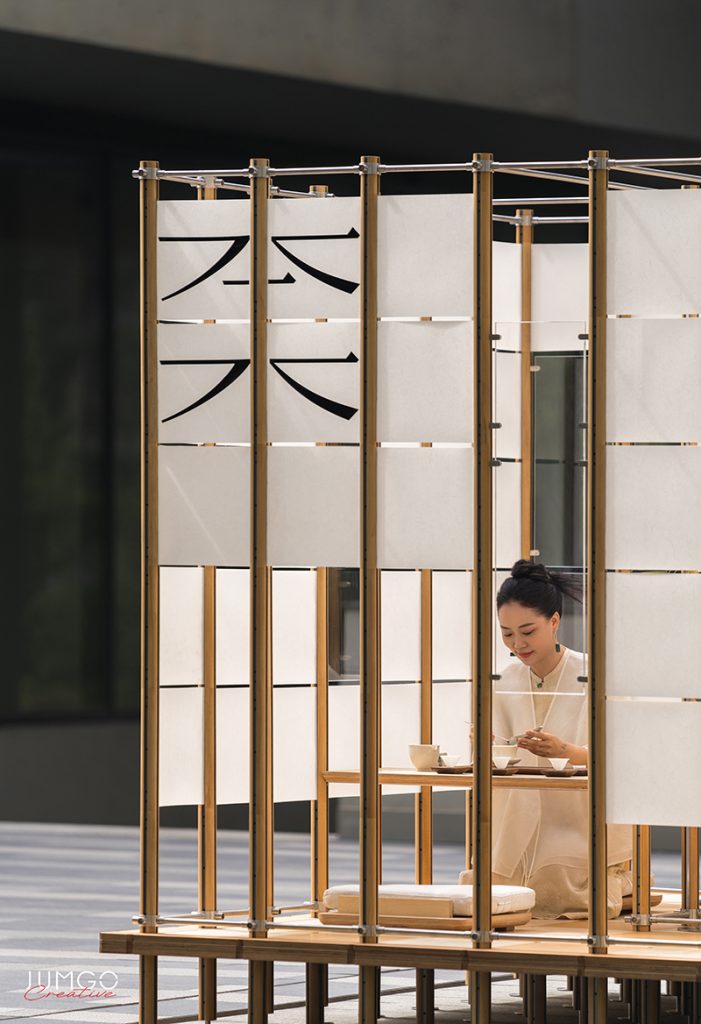
Chi tea room by Jumgo Creative
More than just a tea room, the installation acts as a living demonstration of BEN MOO’s commitment to craftsmanship in a rapidly evolving design landscape. With Jumgo Creative’s conceptual direction and BEN MOO’s artisanal expertise, the Chi tea room shows how ancient knowledge—rooted in the very dimensions of the human body—can shape spatial experiences that feel both timeless and remarkably current.
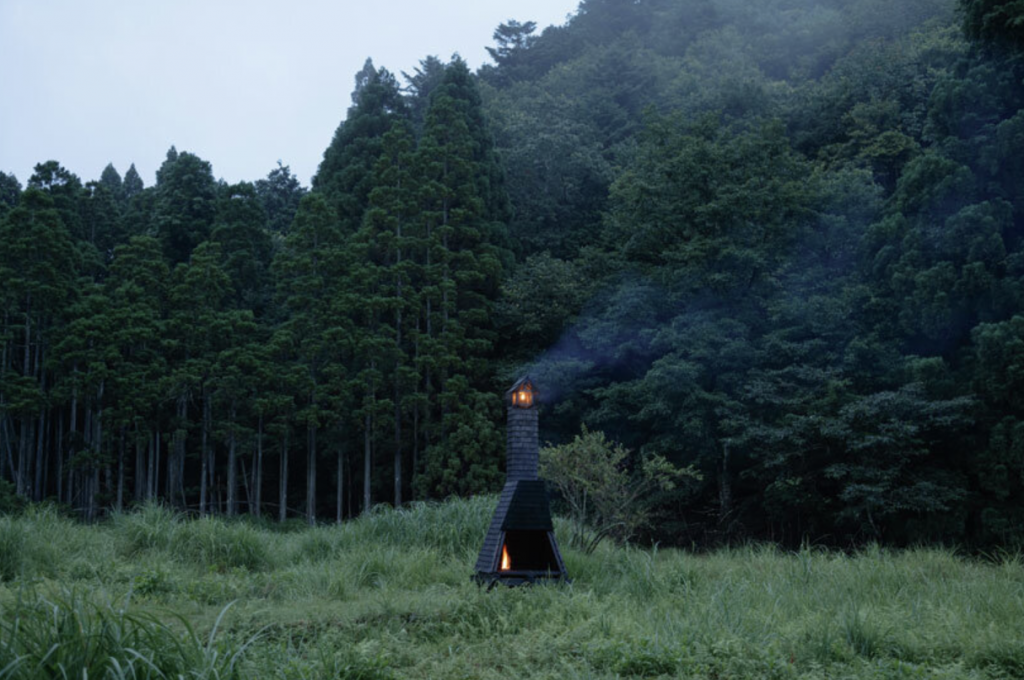
Yacho tea pavilion by 2m26 and Onomiau
Closing this exploration of extraordinary contemporary teahouses, the Yacho tea pavilion—also known as Le Picabier—by Kyoto-based 2m26 and Onomiau presents a poetic interpretation of the tea room as a vessel for elemental experience. Commissioned by Villa Kujoyama, the project is tucked into the northern mountains of Kyoto, where it channels the spirit of Sen no Rikyu, the revered tea master. With a minimal footprint based on reduced tatami dimensions, the structure emphasizes simplicity and intimacy, framed by a tall chimney that brings shadow, silence, and fire into quiet dialogue.

Yacho tea pavilion by 2m26 and Onomiau
Central to the experience is the integration of a fire pit and an overhead lantern, lit by candlelight. This combination grounds the tea-making ritual in physical warmth and ephemeral light, echoing centuries-old practices while evoking a sense of timelessness. The structure’s cladding—burned cedar shingles—draws from traditional Japanese preservation methods and adds a textured, tactile quality that complements the pavilion’s focus on impermanence and sensory awareness.
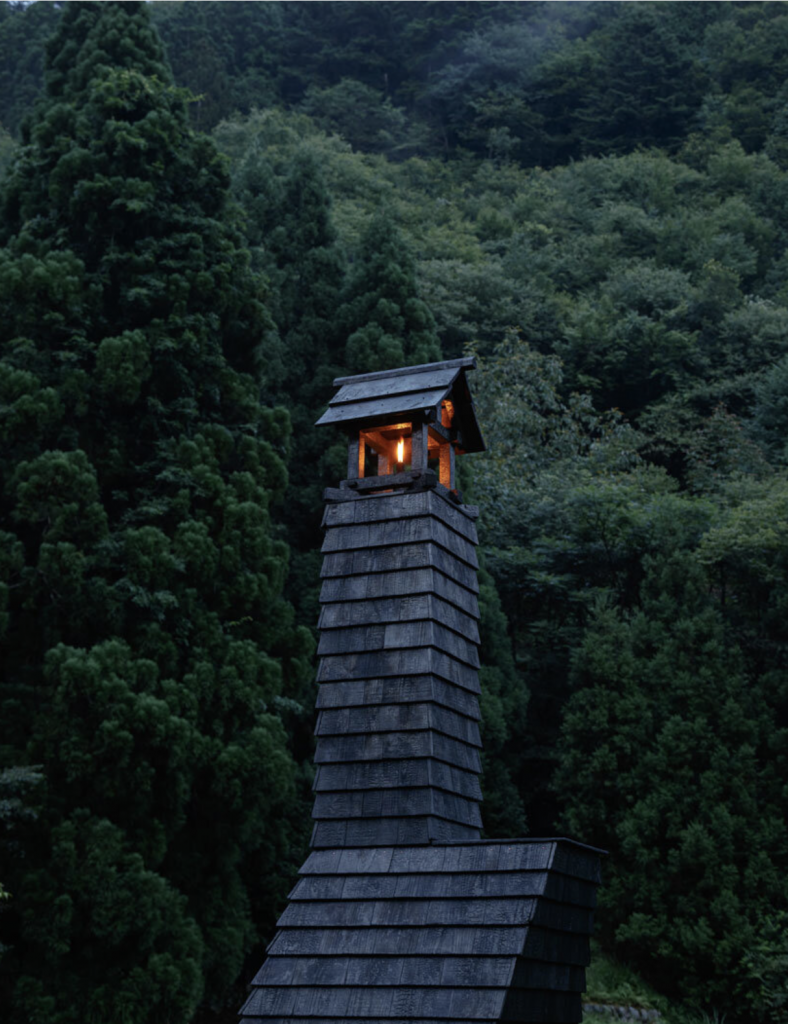
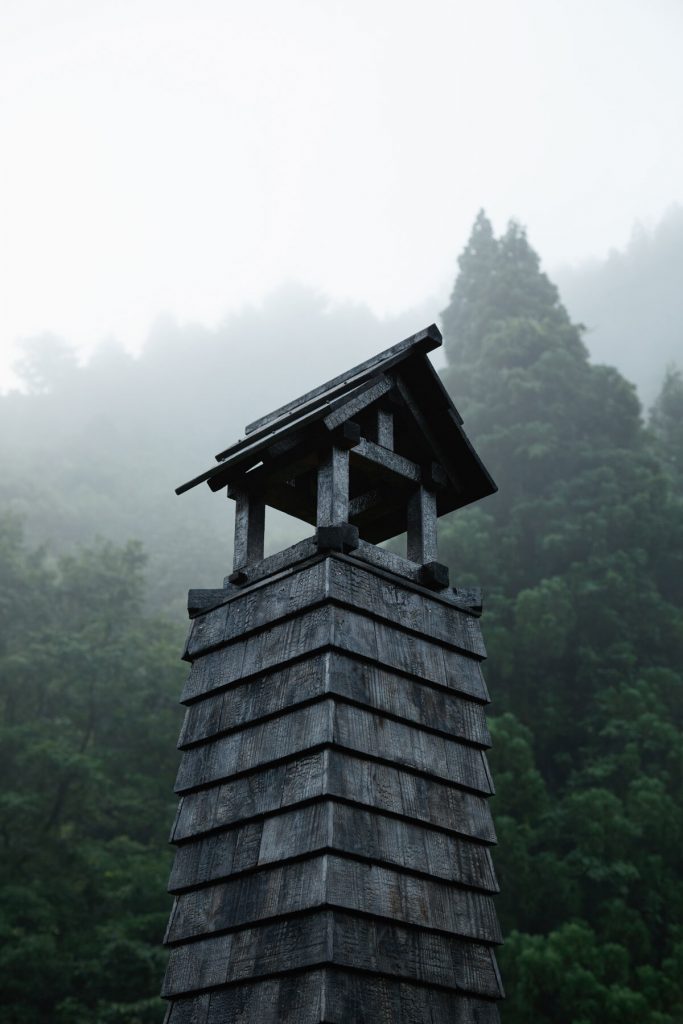
Yacho tea pavilion by 2m26 and Onomiau
Together with the XBAMBOO Cabin and the Chi tea room, Yacho completes a trio of contemporary teahouses that reimagine the centuries-old ritual of tea through architecture. Each project, rooted in cultural heritage yet reaching into the future, illustrates how space, material, and atmosphere can elevate a simple act—drinking tea—into a profound spatial and emotional experience. These small structures, in their restraint, speak volumes about the enduring relevance of the tea room in modern design.